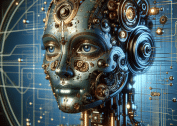Discover how artificial intelligence blends seamlessly into daily routines and powers modern conveniences. This guide explores the ways AI shapes household gadgets, workplace efficiency, and personal experiences, inspiring curiosity around both tech innovation and its practical impact.
The Everyday Presence of Artificial Intelligence
Artificial intelligence, once limited to science labs, is now woven into everyday experiences. Smartphones and smart home devices effortlessly harness algorithms that optimize schedules, recognize faces, and recommend personalized content, making daily tasks more efficient. When considering search engines, music streaming, and navigation, most rely on AI-powered systems optimizing outcomes with little human intervention. Whether asking a virtual assistant for weather updates or depending on an app to translate a foreign phrase, artificial intelligence subtly supports countless daily needs. The blend of convenience with intuitive technology showcases how AI is reshaping routines and amplifying productivity.
Smart devices continually learn from user interactions. This constant pattern recognition results in better recommendations, voice recognition, and even proactive suggestions, such as route changes based on traffic. Wearable fitness monitors use AI to analyze step count, heart rate, and sleep cycles, helping users make data-driven choices. It’s astonishing how these tiny sensors leverage complex computational methods to provide real-time insights, seamlessly flowing from device to device. From grocery lists auto-populated by virtual assistants to AI-curated news feeds, daily life feels increasingly custom-made thanks to these unobtrusive algorithms.
AI-enabled appliances can now automate chores, learning usage patterns to optimize power consumption or alert when maintenance is required. Robotic vacuum cleaners map living spaces, enhancing cleaning effectiveness through machine learning. The convenience of these innovations is rooted in their invisible intelligence—an ever-present network working behind the scenes. This proliferation of AI reflects a deeper shift: the merging of human habits with adaptive, context-aware technology. As people grow more comfortable with these tools, curiosity about how they function and what future upgrades might offer continues to spark interest.
Personalization and Recommendation Engines
Streaming platforms and e-commerce websites leverage artificial intelligence to personalize content in remarkable ways. Music and video services, for example, analyze individual preferences and suggest playlists or films tailored to unique tastes. This is made possible by advanced recommendation engines that identify patterns in viewing or shopping behavior. With every click and viewing session, the system refines its understanding, making future recommendations increasingly relevant. The subtlety with which AI personalizes experiences—without explicit input—demonstrates its transformative potential for entertainment and information consumption.
Online retailers use AI to curate product suggestions, offering shoppers a highly relevant selection that often matches current interests or even predicts future needs. These recommendation systems go beyond basic “you might also like” lists—they incorporate browsing history, past purchases, and millions of similar user interactions to present a uniquely tailored digital storefront. For readers, AI helps suggest articles that align with favored topics. This approach not only saves time but also enhances satisfaction by reducing information overload and streamlining decision-making.
As AI-driven recommendations become more refined, ethical considerations about privacy and data security emerge. Providers are tasked with balancing personalization against user confidentiality. Many platforms now implement transparent data policies and provide users with control over their information. The result is a more informed user base that can participate in digital personalization while understanding how and why content is being suggested. This dynamic exchange promotes trust and ensures AI technology is both beneficial and responsible as it becomes more embedded in daily life.
AI in Smart Homes and IoT
The Internet of Things (IoT) integrates artificial intelligence into the fabrics of modern homes. Smart thermostats, lighting systems, and security cameras all utilize machine learning algorithms to adapt to routines and preferences, offering convenience and efficiency. Motion sensors can trigger lights and alarms, while smart refrigerators monitor supplies and suggest recipes based on available ingredients. This seamless collaboration between devices is fueled by AI’s ability to process large amounts of sensor data, turning simple homes into responsive environments that anticipate needs and boost comfort.
Home automation platforms constantly evolve through machine learning. When environmental conditions change, these systems automatically adjust heating, cooling, and even window shades for optimal comfort. AI-driven assistants control music, manage reminders, and facilitate hands-free calls, making multitasking easier. For individuals with mobility challenges, these intelligent solutions deliver unprecedented independence, helping them manage daily living with ease. As adoption rates increase, AI-powered IoT networks become more scalable, with benefits reaching a wider segment of households worldwide.
Security is a central concern in smart home adoption. Artificial intelligence powers advanced face and motion recognition systems, alerting homeowners to unexpected activity and even discerning subtle behavioral patterns that might indicate intrusion. To address privacy, industry standards are evolving toward encrypted, decentralized processing—keeping personal data secure on local devices rather than in the cloud. This combination of safety and convenience exemplifies how AI enhances both the quality and the security of modern living spaces, paving the way for smarter, safer homes.
Transforming Healthcare and Wellness
Artificial intelligence is transforming healthcare landscapes, supporting diagnostic accuracy and streamlining administrative tasks. Medical professionals now use AI-assisted imaging to detect diseases earlier than traditional methods often allow. Machine learning models analyze x-rays, MRIs, and blood tests, identifying anomalies with precision and speed. This augments the expertise of clinicians and supports better health outcomes. The immediate benefit for patients is faster, more accurate diagnoses, often reducing the wait for crucial information and improving peace of mind.
Wearable devices, powered by AI, help track vital signs, offering continuous health monitoring outside clinical settings. These systems spot trends that might warrant intervention—from irregular heartbeats to sleep disturbances. AI can also enable personalized training programs, nutrition plans, and mindfulness reminders, tailoring wellness guidance to an individual’s habits and needs. For those managing chronic conditions, real-time insights encourage proactive care and lifestyle adjustments, increasing the possibility for early intervention and informed health decisions.
Healthcare providers benefit from AI in resource planning and patient workflow optimization. Virtual health assistants answer questions, remind users about medications, and facilitate communication with professionals. Data-sharing between platforms is enhanced, supporting research and public health planning. Despite these advantages, there’s active debate regarding data privacy and algorithmic fairness. Authorities work to regulate the use of sensitive information, ensuring the application of AI in healthcare remains ethical and trustworthy while driving innovation that improves lives.
The Workplace Revolution Driven by AI
Office environments have undergone substantial change thanks to artificial intelligence. Automated scheduling tools, virtual meeting assistants, and document analyzers handle repetitive administrative functions, freeing up time for creative tasks. AI-powered chatbots manage common customer inquiries, improving response rates and allowing staff to focus on more complex challenges. For businesses, leveraging these technologies increases efficiency and helps scale operations, especially in service-centered industries.
Data analytics platforms are another work staple powered by AI. These sophisticated programs analyze trends, predict consumer behavior, and inform decision-making at every level. Marketing departments monitor the effectiveness of campaigns with dashboards updated in real-time; AI systems highlight success metrics or flag underperforming initiatives. In logistics, machine learning models optimize inventory, forecast demand, and enhance supply chain coordination, underpinning smoother operations for organizations of all sizes.
This shift does spark important conversations about job security and the future of work. Automation can replace some roles, but it also generates new opportunities, demanding fresh skills such as data analysis, machine learning comprehension, and ethical technology oversight. As a result, educational efforts increasingly prioritize these competencies, enabling current and future employees to thrive in AI-augmented workplaces. The synergy between humans and AI is reshaping the concept of productivity, encouraging both adaptability and lifelong learning.
Ethics and Challenges of Widespread AI Adoption
As artificial intelligence expands across sectors, ethical challenges and practical limitations require thoughtful scrutiny. Algorithmic bias—when machine learning systems produce unfair or unbalanced results due to incomplete or skewed data—remains an ongoing concern. Addressing these biases demands transparency in AI development, diverse training datasets, and regular third-party audits. Technology creators are increasingly called upon to clearly articulate how algorithms function and ensure their systems do not inadvertently reinforce societal inequalities.
Data privacy has become a defining issue in debates around AI. Personal information, continuously collected and processed to enhance user experiences, must be handled securely. Legislators and advocacy groups work to establish frameworks that restrict misuse, reinforce consent, and offer consumers visibility into how data is stored and used. Organizations face the dual challenge of innovating while prioritizing user trust. Achieving this is crucial for the future adoption of AI-driven services and devices.
AI’s rapid evolution demands flexible regulation and well-informed oversight. Public education efforts highlight potential risks and dispel misconceptions, empowering users to make informed choices about engaging with smart tools. Collaborative approaches—where developers, regulators, and communities work together—are gaining traction in defining responsible standards. As society navigates the promise and peril of AI, ongoing curiosity and vigilance remain key to shaping ethical, inclusive, and beneficial technologies for all.
References
1. U.S. Department of Energy. (n.d.). Artificial Intelligence. Retrieved from https://www.energy.gov/science-innovation/artificial-intelligence
2. Stanford University. (n.d.). AI Index Report. Retrieved from https://aiindex.stanford.edu/report/
3. National Institute of Standards and Technology. (2023). Trustworthy AI. Retrieved from https://www.nist.gov/artificial-intelligence
4. World Health Organization. (n.d.). Artificial Intelligence in Health. Retrieved from https://www.who.int/health-topics/artificial-intelligence#tab=tab_1
5. Pew Research Center. (2023). How Americans View Data Privacy. Retrieved from https://www.pewresearch.org/internet/2023/04/26/how-americans-view-data-privacy/
6. Brookings Institution. (n.d.). Artificial Intelligence and Ethics. Retrieved from https://www.brookings.edu/topic/artificial-intelligence/









